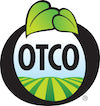The World's Healthiest Food is a Cyanobacteria? The Benefits of Spirulina
If you had to guess, what do you think is the world's healthiest food? A vegetable, like kale? A fruit, maybe a berry? Perhaps something like an egg or a glass of milk? Would you be surprised by an algae? But that's precisely what some experts say about the benefits of spirulina, the blue-green cyanobacteria.
While "healthiest food" is a highly contestable term since our nutritional needs vary so greatly from person to person, we do have a pretty good baseline for what constitutes healthy.
Spirulina, while technically not an algae (but referred to as one because it closely resembles one and it's much easier to say than cyanobacteria), may seem like an insignificant nutrition source, but it's actually loaded with protein—an amazing 50 to 75 percent protein by weight (for comparison, red meat is just about 27 protein by weight!). Protein found in spirulina is more digestible too than animal sources, meaning you'll maximize your protein uptake from the blue-green powder more so than you will from a steak.
The benefits of spirulina also include all the necessary essential amino acids, and that gorgeous blue-green color means it’s a rich source of chlorophyll and potent antioxidants, too. Chlorophyll is structurally very similar to human blood and is a potent detoxifying agent that can boost function of the digestive tract, help reduce bad breath, and purify the blood.
Those antioxidants in spirulina help provide cellular protection from diseases including certain types of cancer. They boost immune performance overall, and, when eaten just before sun exposure, can even help provide you with natural sun protection!
Spirulina packs B vitamins and the important fatty acid, gamma-linolenic acid (GLA). What's notable about the presence of GLA, according to Dr. Mercola, is that it's not typically found in such high concentrations in any food. The body actually has to synthesize it out of linoleic acid rich foods (flax seeds, safflower oil, fish). GLA plays an important role in immune function and inflammatory responses.
The body requires a number of various nutrients to perform best, and no one food can provide everything we need, but spirulina comes pretty darn close. Because the body can utilize so much from the cyanobacteria, it's worth adding to your diet no matter what else you eat.
For some, spirulina can be pretty to look at, but not so yummy to eat. Others love the flavor. Not to worry—you can get your blue-green burst of goodness in pills or capsules if you're not into the taste. But if you do like that rich and creamy flavor, look to add spirulina powder to your smoothie or juice recipes. You can even add it to salad dressings, baked goods and add to yogurt or oatmeal. It's a truly fun food—kids especially love the color and taste—and the energy and health boost they get from it make it an excellent reason to add spirulina to your diet.
Image: sweetonveg
Leave a comment
Comments will be approved before showing up.



